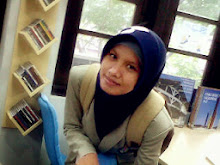Marxism or
communism was from
Europe industry society context. The industrial revolution in Europe in the
19th century, created a social inequalities in society. This gap occurs between
the bourgeoisie (capitalists) with the proletariat.
The capitalists
collect money and benefit at the expense of proletarians (workers). The proletarians conditions is very sad because they were forced to work long
hours with minimum wage, while the results of their work is only enjoyed by the
capitalists. Many proletarians must live in rural and slums areas. Looking at
this situation, Karl Marx and Jorgen Hagerman criticized through a thought to change
that situation.
Marxism is a theory to equate the
social and economic status between proletarians and bourgeoisie. The essence of this theory is wishing a freedom as free as possible for proletariat that can be an intact human
being.
The positive and negative impact
will appear from this application of Marxism theory. The positive impact is an
equality of social status, where the marginal opportunity (proletariat) to fulfill his living desire and human right will be exposed widely,
be sides, an opportunity to improve the quality of living as well. But it will
emerge a condition of society-centric
materialist society.
Marxist
Literary Theory
It is a form
of critique or discourse for interrogating all societies and their text in
terms of certain specific issues – including race, class, and the attitudes
shared within a given culture.
Marxist
literary theories tend to focus on the representation of class conflict as well
as the reinforcement of class distinctions through the medium of literature.
The pioneers:
Karl
Heinrich Marx (1818-1883) and Friedrich Engels (1820-1895).jpg)




